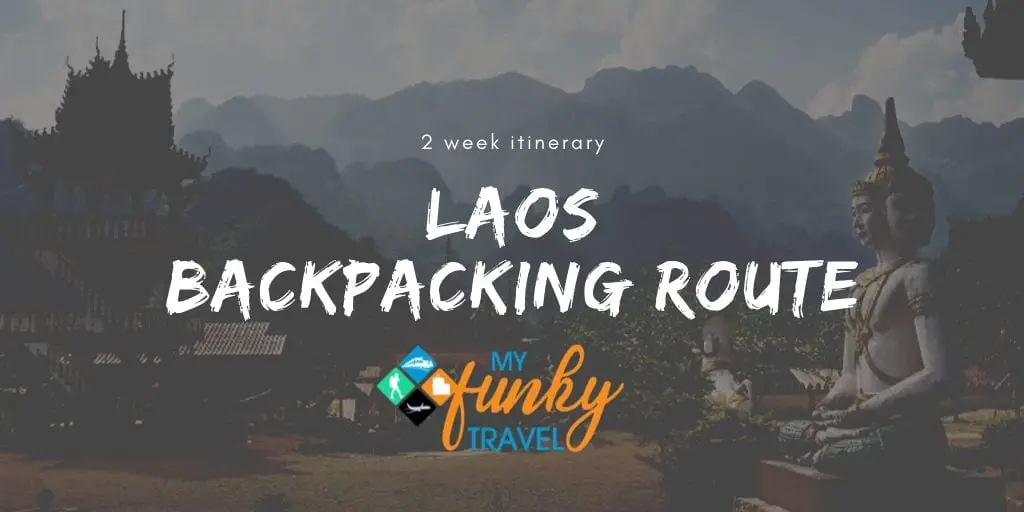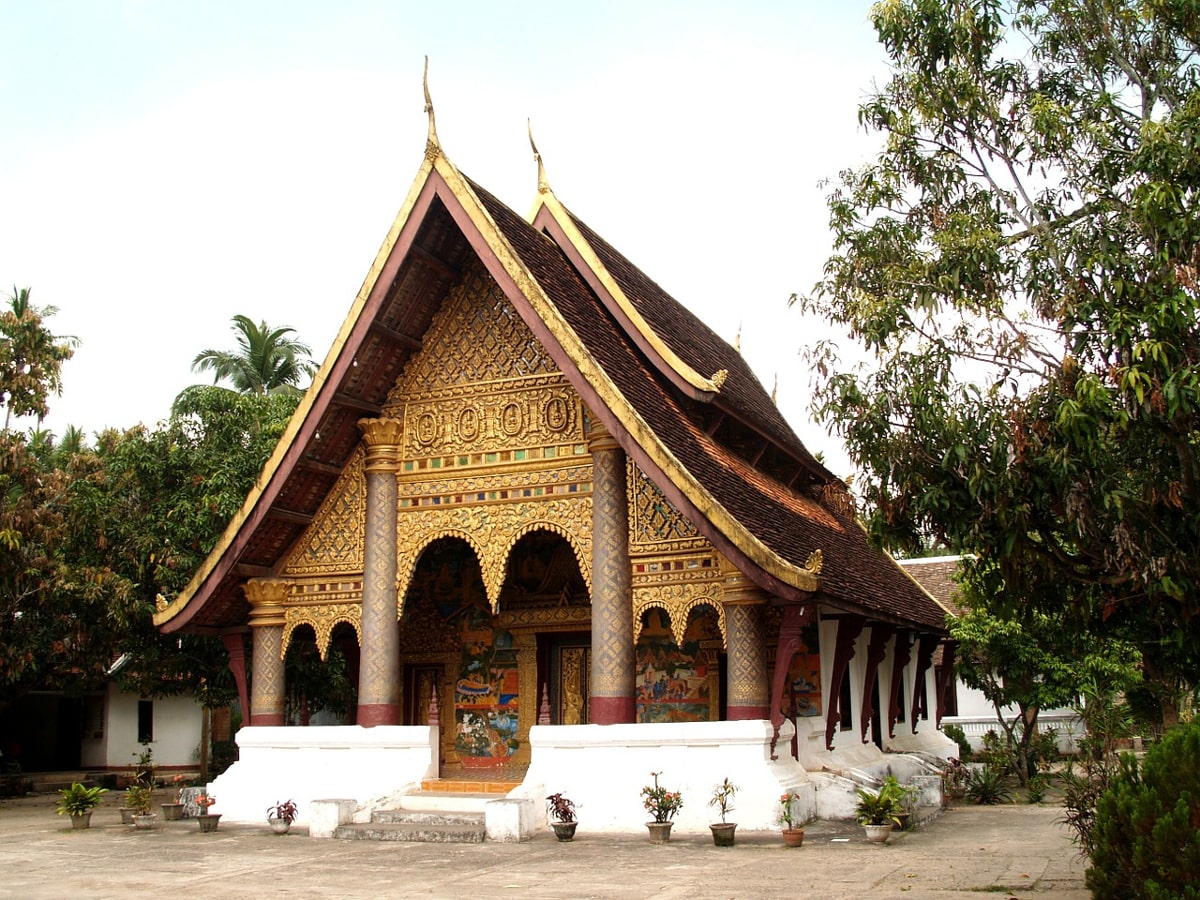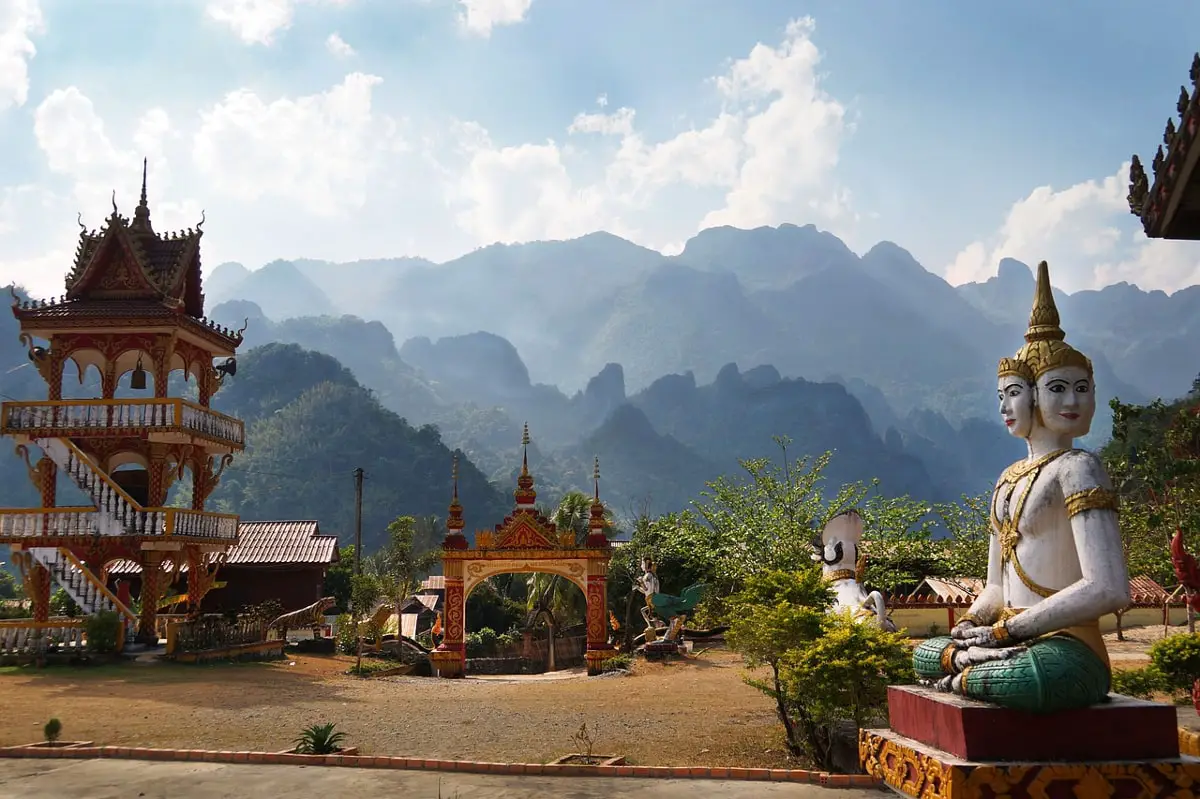Laos is home to brilliant waterfalls, stunning landscapes and rich culture that will be worth every ounce of time and effort you spend getting there and backpacking around. Still slightly removed from the tourist extravaganza that fills much of Southeast Asia, Laos offers a slower pace of life. So, if you have time to spare, choosing Laos as a destination will surely wow you with its natural beauty but also the simple bliss that is found in the air. Read on for our Laos backpacking route, a guest contribution by Lauren from trekbible.
Table of Contents
Laos Backpacking Route
How long do you need?
This route could probably be done in about a fortnight easily enough but the pace of life in Laos is slow and it’s a country where rushing around is not really the way to go. It’s also a country where travelling from A to B is time-consuming and often uncomfortable so there will be days when you will spend a lot of time on buses and probably won’t get much else done.
There are plenty of day-trips and possible points of interest in between the five main bases in this Laos backpacking route so you could easily spend up to a month in the country and it’s certainly an affordable place to hang around.
How should I budget for a trip to Laos?
Possible budget for this itinerary for backpacking Laos: £450-600 | €530-700 | US$600-800
This is the cost of travel in Laos based on spending roughly 3 to 4 weeks (most visas expire at 30 days) there on a shoestring budget. It doesn’t include the cost of travel to Laos or other pre-trip expenses. December 2021 exchange rates are used for conversion. For a more comfortable experience with more extra activities and trips, you may want to budget a bit more.
Travel Insurance for backpacking Laos
The cost of travel insurance isn’t included in the budget figures above. You can get a quote in less than a minute from Heymondo who provide well reviewed international travel insurance for longer, backpacking trips.
How to pay for things in Laos
The official currency is the Lao Kip although US Dollars and Thai Baht are also widely accepted. It’s certainly a good idea to always carry US Dollars in cash at all times so be sure to take some out before arriving in the country, particularly if you are going to get a visa on arrival (not possible at the time of writing – December 2021) which usually requires you to pay in cash (USD).

Although not a huge country, Laos’ unusual shape and poor roads make it a time-consuming place to travel in. It will be easiest to see everything to the fullest if you go from north to south, or vice versa. So, this Laos travel itinerary will walk you through the north to south route, but it can easily be reversed depending on where you’re coming from or going to next.
In addition to departure and arrival plans, also take into account the different things in each region in Laos as you plan your trip. The north is more mountainous and secluded, while the south has farmlands and more people. The north can be more adventurous, but also more dangerous and cold depending on your skills and comfort travelling. So, let’s get started.
Luang Prabang

I’ll let you decide how to get to Luang Prabang, the first stop on our itinerary; you can choose between coming over from Thailand or taking a cheap flight from Bangkok. If you’re coming down from Vietnam, you can take your time travelling through the dense and secluded rainforest and mountains.
Luang Prabang is beloved for its gorgeous waterfalls, daily alms in the morning, and beautiful culture portrayed through the local markets and artisans. There are a myriad of hiking trips that can be made from here, but while you’re in the town make sure to hike to the top of Phou Si Mountain for the sunset. It is not a long climb, but it is a popular place to enjoy the stunning scenery and evening light. If you have time, make a trek up to Nam Ou and hire local guides to show you around the mountains.
As you spend time in Luang Prabang, you’ll fall in love with the people while sipping coffee during the daily alms. For things to do during the day, check out Wat Xieng Thong, also known as the Golden City Monastery. Built in 1560, it is a stunning work of art from all angles. In addition, the city will be a wonderful spot to try your hand at Lao cooking, yoga, or their national sport. Feel free to explore the city just for a day or two, or weeks at a time. As you spend more time here, the local culture and customs will slowly open up to you as you delve into all the possibilities.
Vang Vieng
Once you’ve had your fill of Luang Prabang, head south to Vang Vieng. This is the central tourist location in Laos, as tubing on the Nam Song river has become quite popular – and deadly – over the years. With riverside bars having been popular in the early 2000’s, this was the party spot. However, after too many fatal accidents, the bars have shut down directly on the river. That being said, making wise choices as you float can still be an incredible experience! Make sure to take good care of your tube and avoid bringing anything precious or breakable down the rapids…you will get soaked.
Amongst the best of Vang Vieng are excellent food, cheap hot air balloon rides, rock climbing, kayaking and many more activities. If you find yourself in need of a few extra dollars or food while here, it’s often easy to pick up work in exchange for accommodations or drinks. Lastly, don’t forget to check out the Blue Lagoon on your way out of town as well.
Vientiane
Southward will lead you to the capital of Laos, Vientiane. This is the hub of transportation and government in Laos, which has resulted in a city not bustling much in culture as compared to other places. So, Vientiane will not be a place to mull around for days taking in every ounce of culture. But, there are a few places to make sure to see.
Xieng Khuan is one of two Buddha parks which, you guessed it, are full of Buddha statues. It will give you a general overview of Lao Buddhism and welcome you to the culture. The other must-see while here is the Thong Khan Kham market. With any Lao food you could imagine, you will even have the opportunity to choose your next meal while it’s still breathing. Yes, the live market is not for the squeamish but you sure can’t beat it for freshness.
If you have time for a day or two trips, take a bus to the village of Ban Kong Lo, near the Tham Kong Cave. It is a stunning, picturesque introduction to the landscape you’ll see further along in the Thousand Islands.
Pakse

For your next stop, keep heading south to Pakse. Pakse is the gateway to some of Laos’ most breathtaking treasures, from the Bolaven Plateau to the Wat Phou complex. The Bolaven Plateau is home to amazing motorcycle routes, numerous secluded waterfalls, and some strong coffee and tea plantations.
If any of these pique your interest, follow that urge and backpack the plateau. The Wat Phou complex is a UNESCO World Heritage site and comprised of an old Khmer Hindu temple nestled on a hillside. It is a little bit of a side trip to get here, but you will have stunning views of the Mekong River.
Si Pha Don (Four Thousand Islands)
Near Pakse is also Si Pha Don, also known as the four thousand islands. With a myriad of islands to camp, stay, hammock, and explore, there are endless possibilities for days to spend here. If you’re lucky and visiting during November through March, you have a small chance of seeing the rare and beautiful Irrawaddy river dolphins as well. These are quite the elusive treat but well worth the wait.
If you’re having trouble picking where to go, our favourite of these islands, often called ‘the most chill place in South East Asia’ is Don Det, an island without a timeline and perfect to relax. Take a tube ride on the river here that is a whole different pace from your experience in Vang Vieng.
Check out our other Asia routes!
southeast asia | thailand | myanmar | vietnam | laos | indonesia | philippines | cambodia | india | taiwan | sri lanka | japan | malaysia
Author Bio
Lauren is a trekbible writer and story maker from Pine Valley, California. She and her husband work in the recreation department at a camp. In their free time, they enjoy mountain biking, building out their Sprinter van, and adventuring with their new puppy, Shadow.
Backpacking Laos 2022 – Will it be possible?
Hopefully this has helped you find your best itinerary for Laos but it’s safe to say not many foreigners have been venturing to the country since the pandemic began in March 2020. That’s partly because most backpackers typically head there via land borders to/from Thailand which has had very strict entry restrictions throughout much of 2020 and 2021. Even if you’d been able to find a way into Thailand, all of Laos’ international land borders have been closed to everything besides commercial traffic.
As of early December 2021, that remains so and with Covid-19 cases rising in the country, that’s likely to be the case into early 2022 at least. With hardly any international flights into Laos at the moment either and few visas being issued, it’s certainly premature to start planning any trip to the country for travel purposes.
Hopefully things will change at some point in 2022 and the country has recently announced plans for a tourism program which will at least partially open the country to fully vaccinated travellers again. Initial reports though suggest it will mostly be targeted at Chinese and Korean travellers.
Visa Requirements for Laos
Pre-covid, most travellers could get a 30 day visa on arrival for a fee of between $30-40 depending on their nationality. These could be obtained at airports or border crossings by paying in US Dollars and providing a passport photo. Some nationals, such as citizens of other ASEAN countries, as well as South Koreans and Russians did not need a visa.
However at the time of writing, the visa on arrival program has been fully suspended at all international entry points. While some foreigners are being granted visas for work purposes, there are limited options for tourist visas. The best advice is to keep updated on the entry requirements and keep checking your own government’s pages on travel to the country or with your nearest Lao embassy for fresh updates.
This article was published in June 2018 and updated in December 2021.

